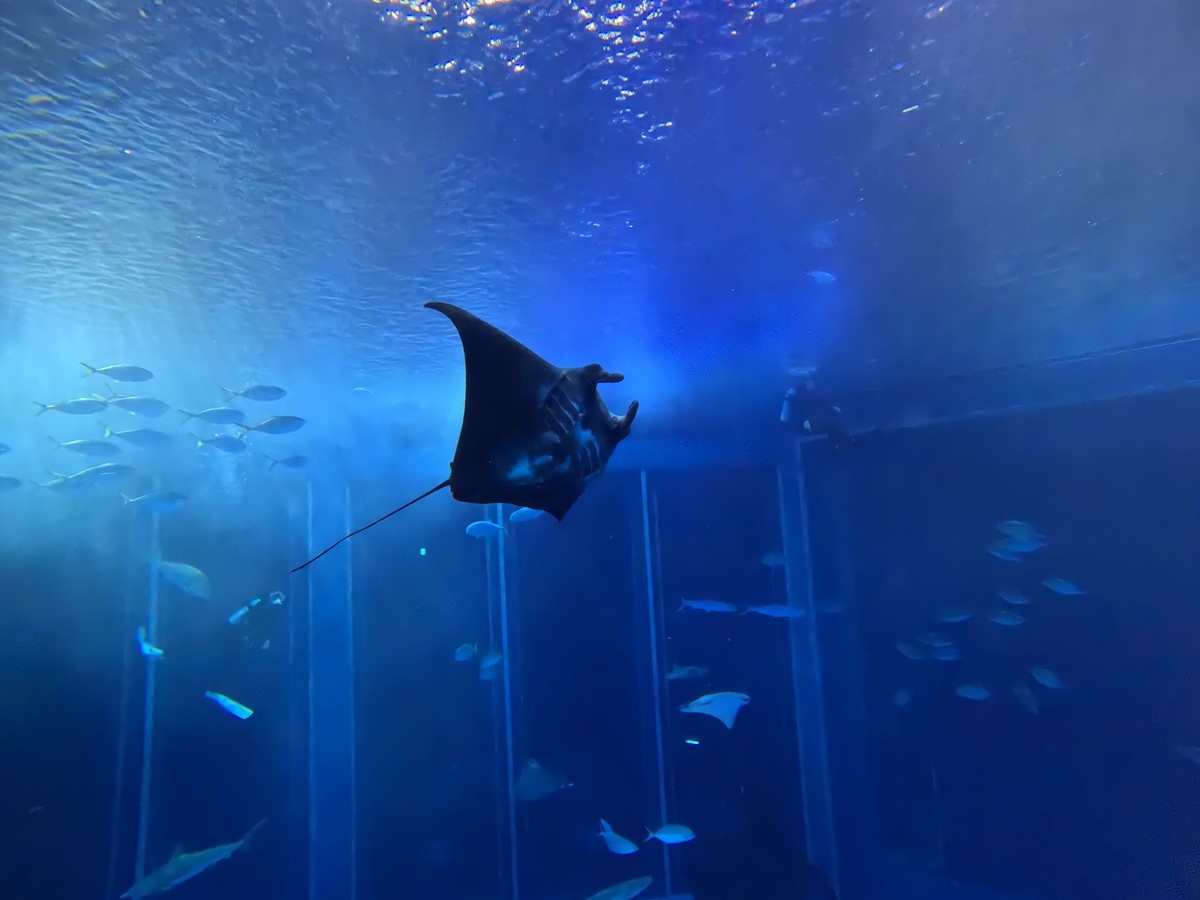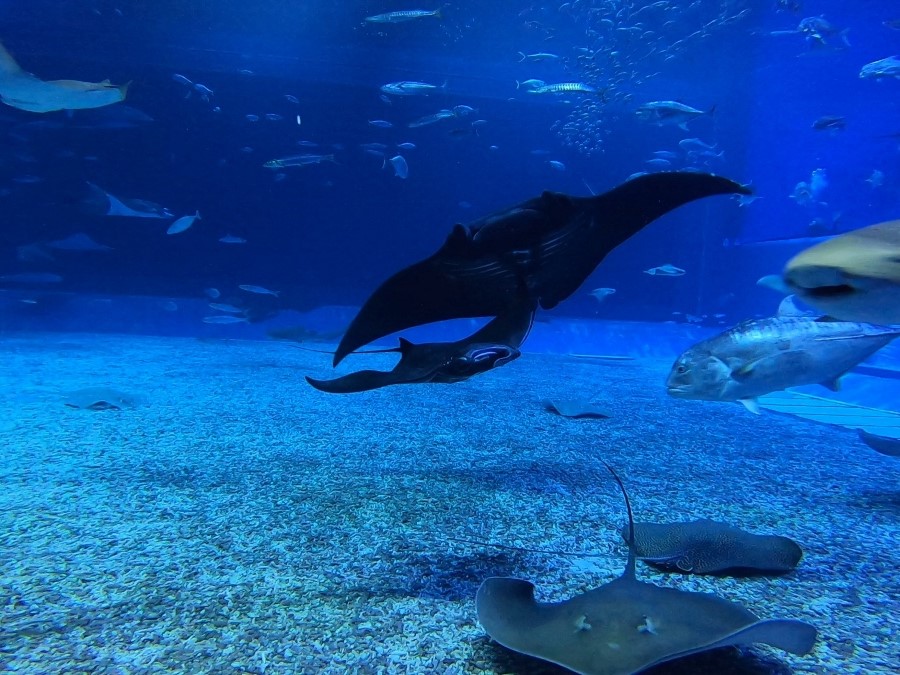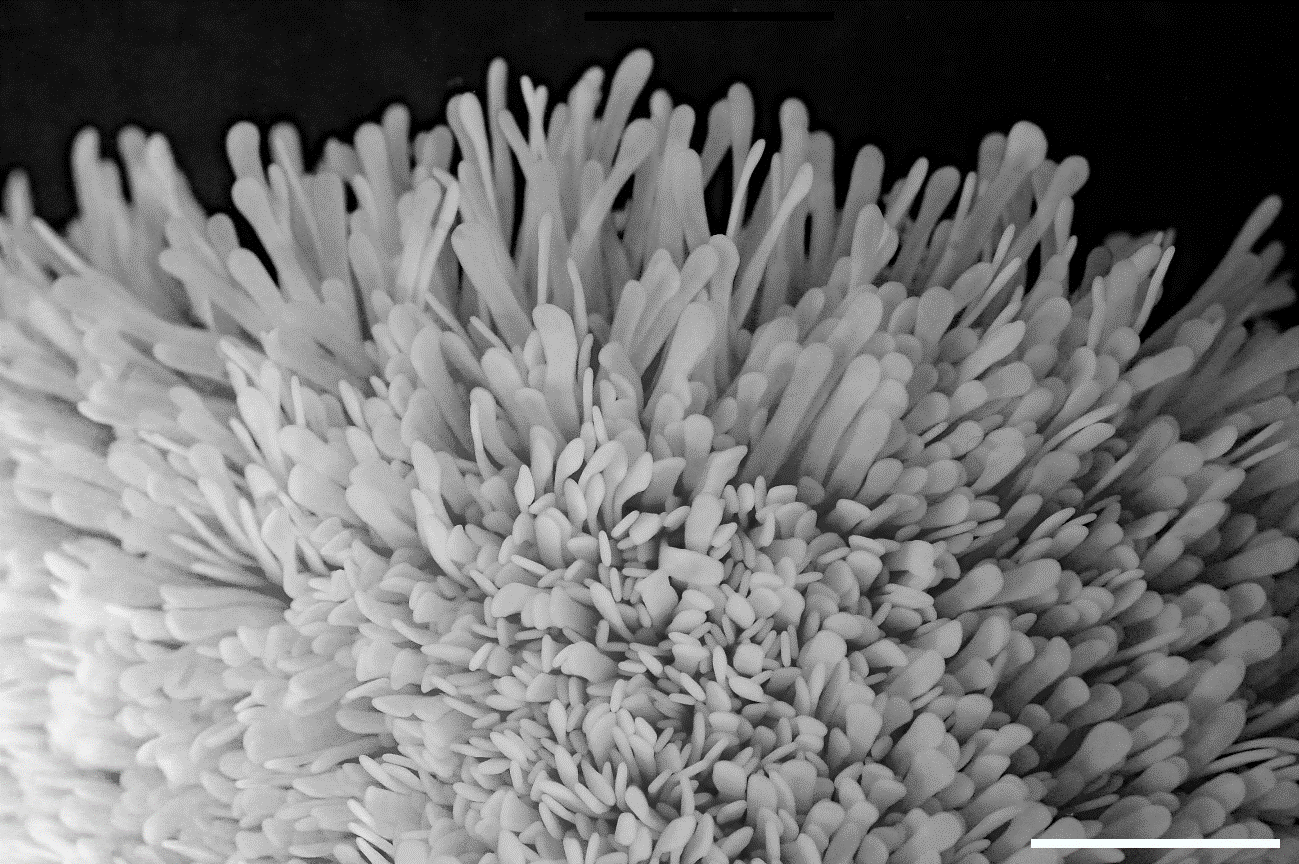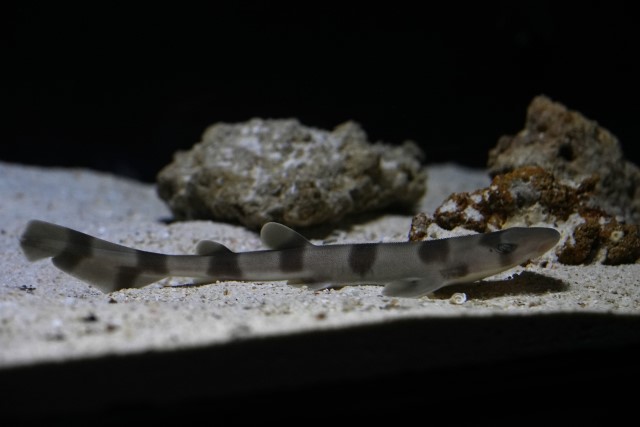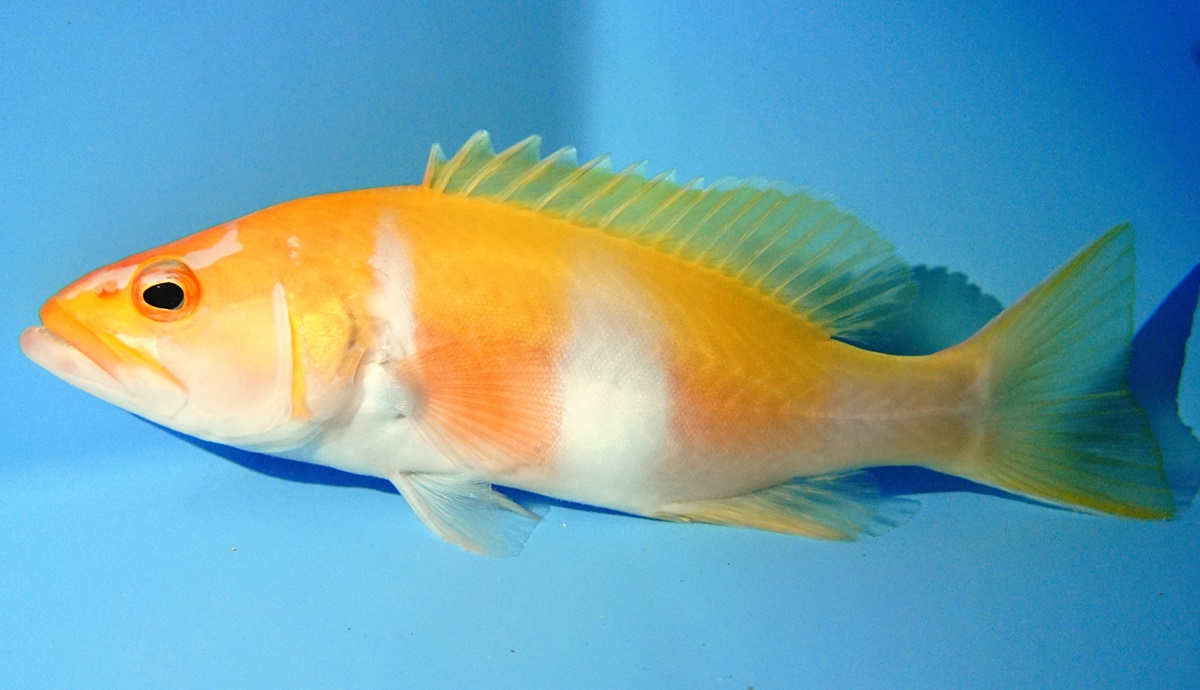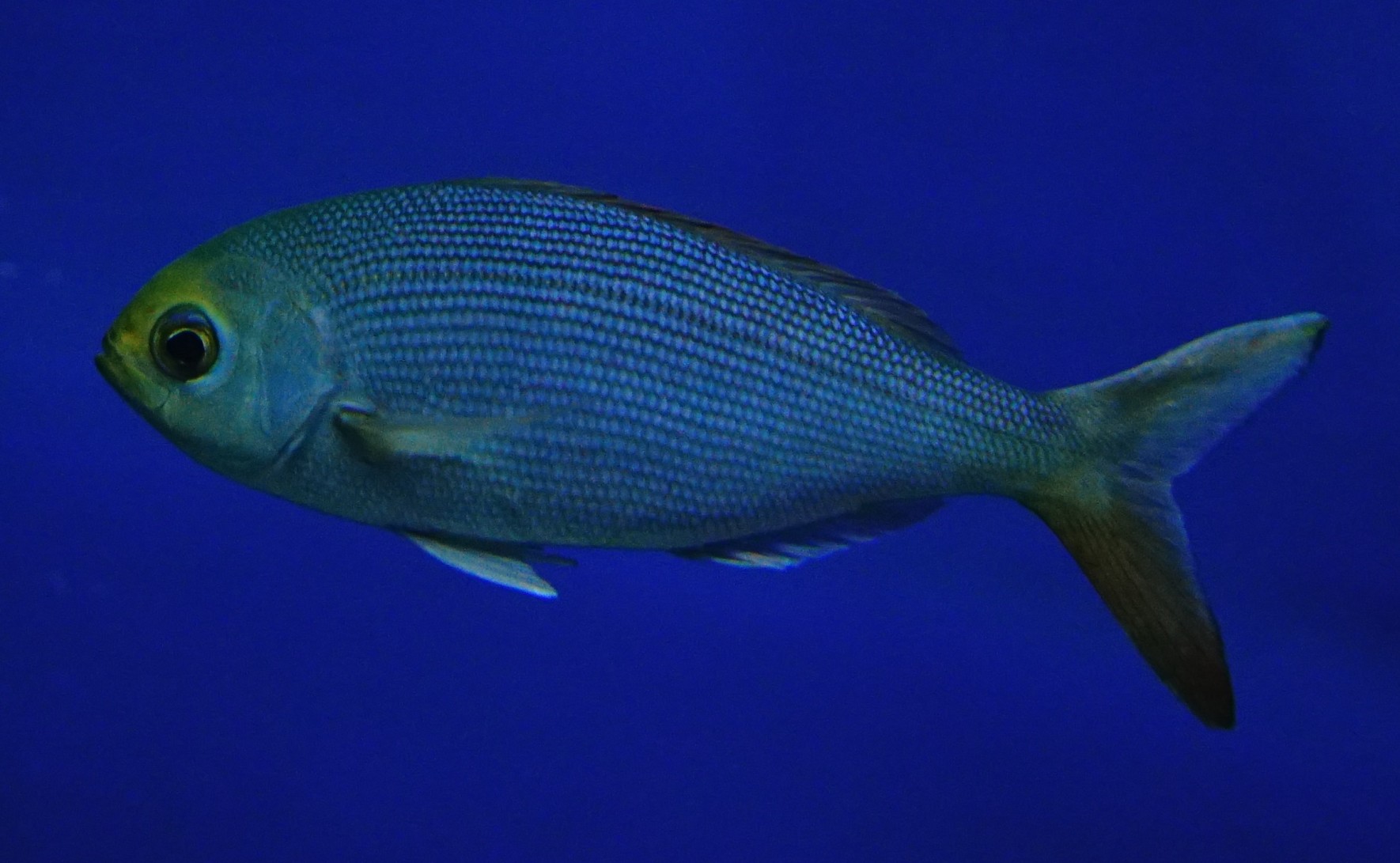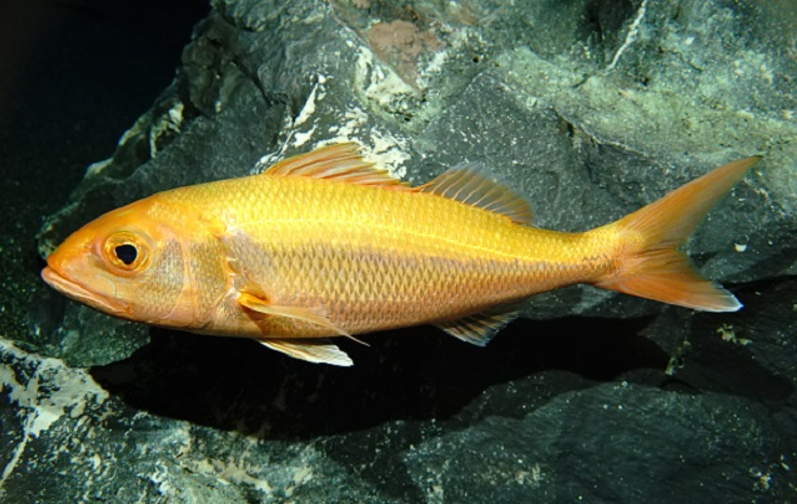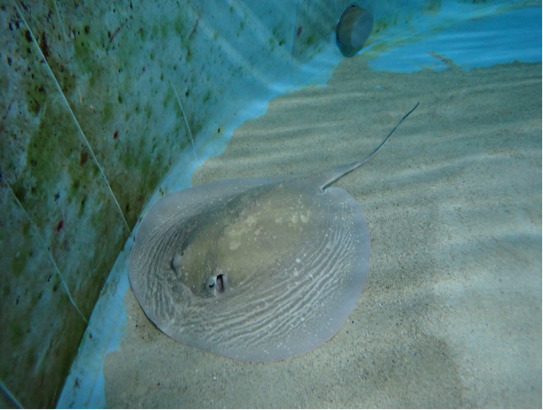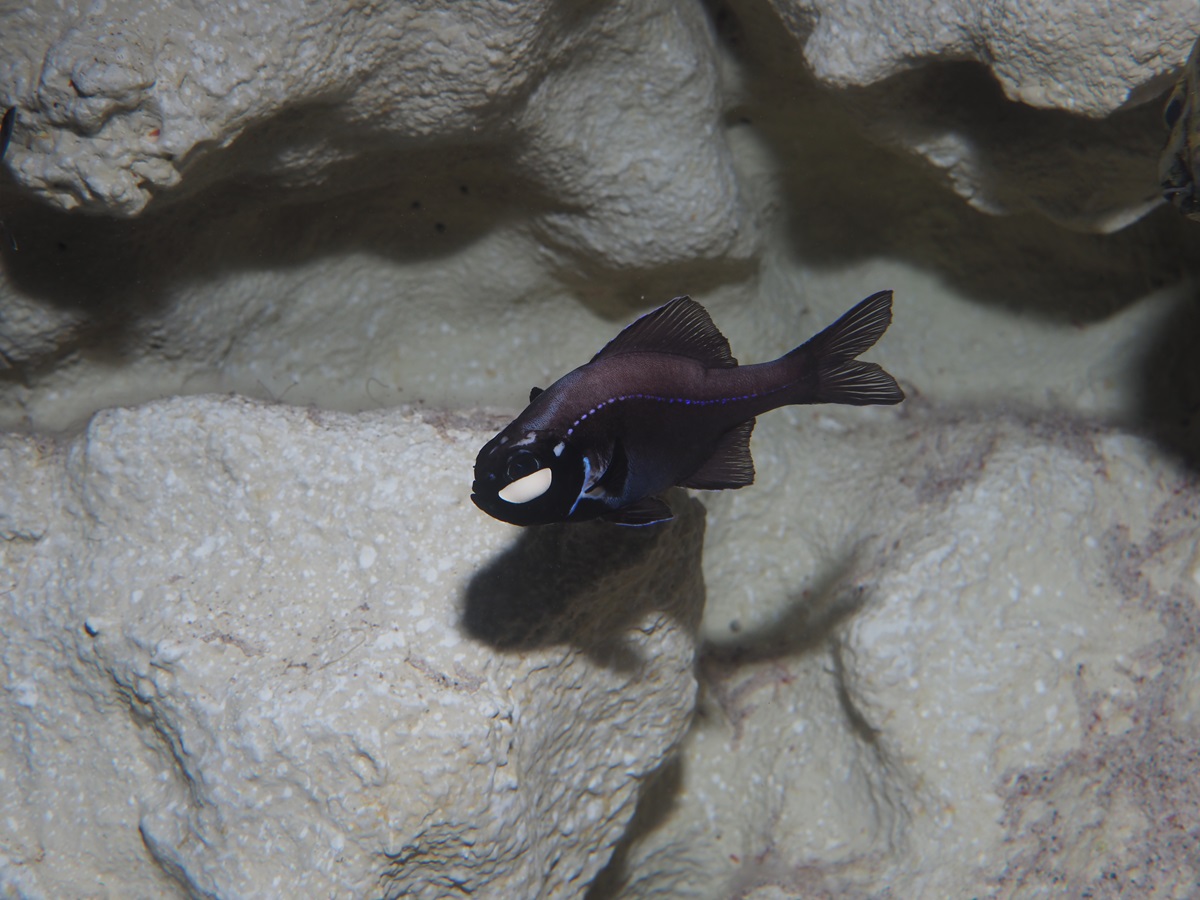Topics
2024.08.10
A world’s first!! A black manta is born.
A healthy baby black manta (a black coloration of the Alfred manta) was born on August 5th, 2024 (Monday).
On the day of its birth, we observed signs of delivery such as the mother’s cloaca opening, and at 18:55 a section of the fetus’ body emerged. The birth was recorded at 19:02. The whole body of the female baby manta is black. At birth, its disk was 160 cm in width, and it weighed 42 kg. This is the world’s first birth of a black manta in captivity.
The baby manta has been transferred to a tank in the aquarium’s backyard and is happily swimming. When the baby manta is ready to be seen by the public, we will make an announcement on our website.
Breeding of mantas
The reproductive mode of stingrays, and mantas is lipid histotrophic embryogenesis (uterine milk production). In its first stage in the uterus, the fetus takes nutrients from the yolk, however after growing for some time, it begins to consume the uterine milk which is secreted in large amounts from numerous nutrient-providing uterine villi (as in the image) in the uterine wall. This enables the fetus to grow quickly to be extremely large over the 1-year gestation.
At Okinawa Churaumi Aquarium, reproductive studies of manta conducted under captivity have led to many publications and research discoveries that are important for global knowledge. These have included respiration and nutrition intake of manta fetuses within the womb, and monitoring growth using ultrasound. Studying processes such as the physiological maturation of manta rays from birth will also contribute to the conservation of rare species.
1: Tomita Taketeru, Toda Minoru, Ueda Keiichi, Uchida Senzo and Nakaya Kazuhiro, (2012) Live-bearing manta ray: how the embryo acquires oxygen without placenta and umbilical cordBiol. Lett.8721–724. http://doi.org/10.1098/rsbl.2012.0288
2: Murakumo, Kiyomi, Rui Matsumoto, Taketeru Tomita, Yousuke Matsumoto, and Keiichi Ueda. (2020) "The power of ultrasound: observation of nearly the entire gestation and embryonic developmental process of captive reef manta rays (Mobula alfredi)." Fishery Bulletin 118, no. 1 (2020). doi: 10.7755/FB.118.1.1
3: Nozu, Ryo, Kiyomi Murakumo, Rui Matsumoto, Yosuke Matsumoto, Nagisa Yano, Masaru Nakamura, Makio Yanagisawa, Keiichi Ueda, and Keiichi Sato. (2017) "High-resolution monitoring from birth to sexual maturity of a male reef manta ray, Mobula alfredi, held in captivity for 7 years: changes in external morphology, behavior, and steroid hormones levels." BMC Zoology 2 (2017): 1-8. https://doi.org/10.1186/s40850-017-0023-0
